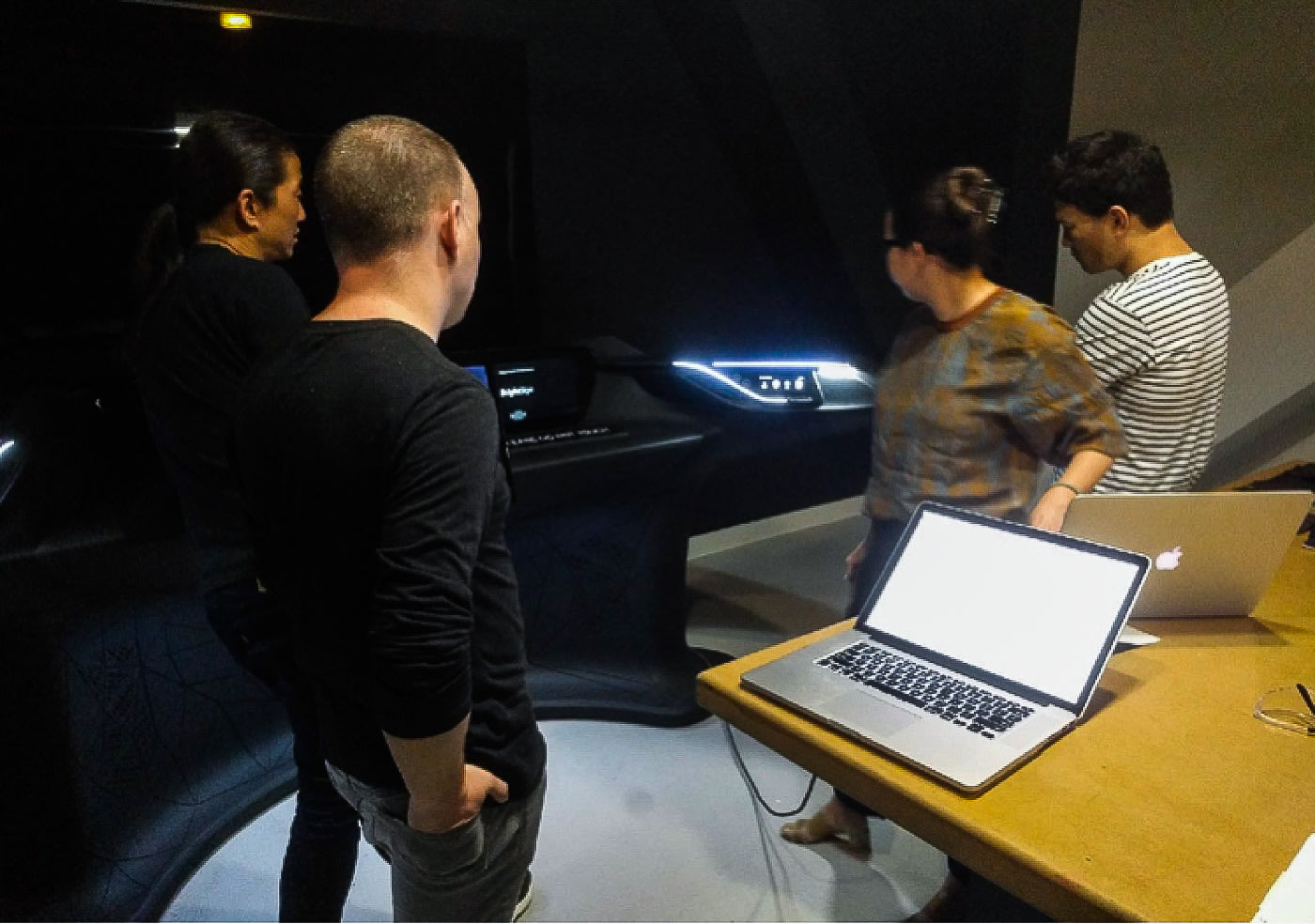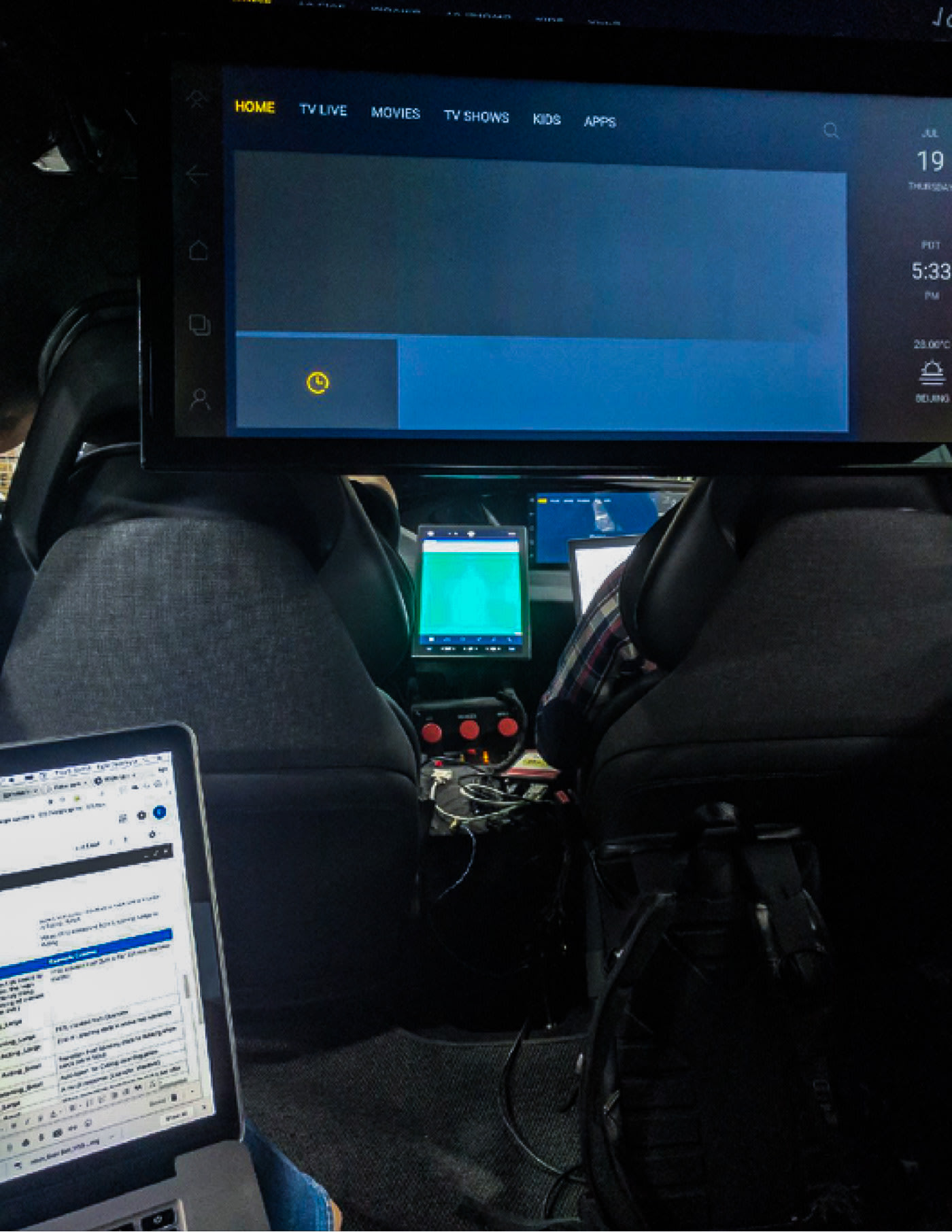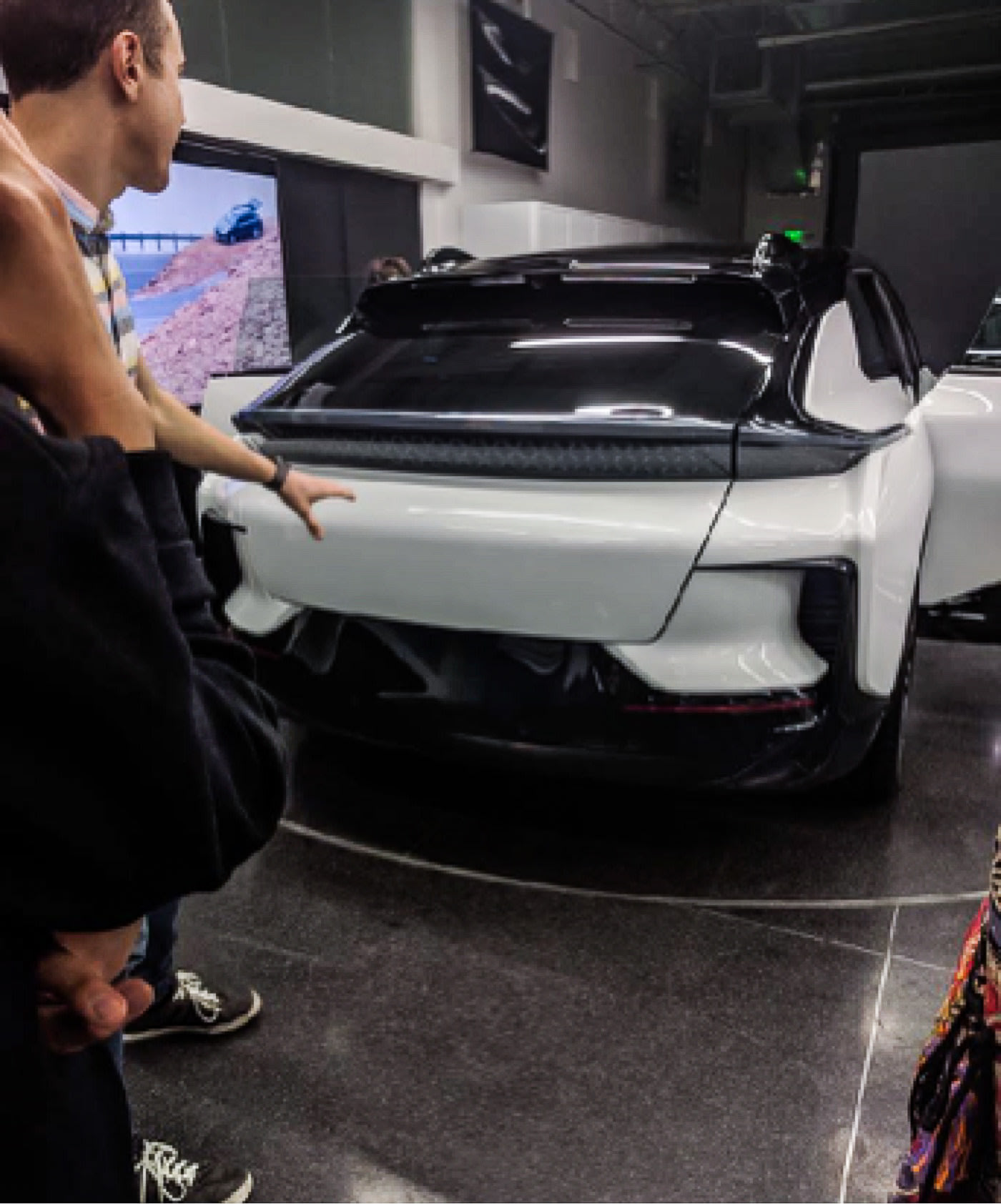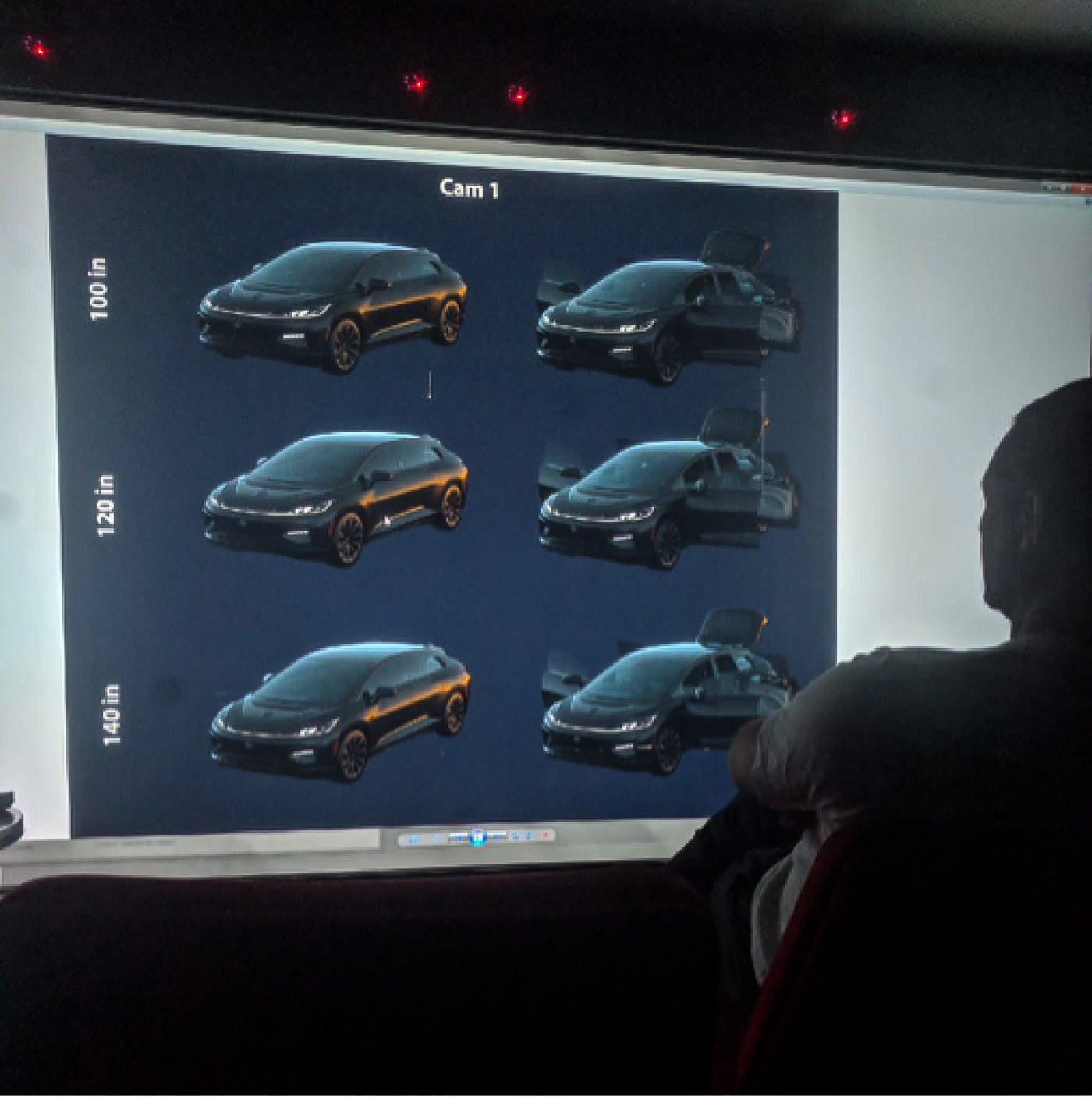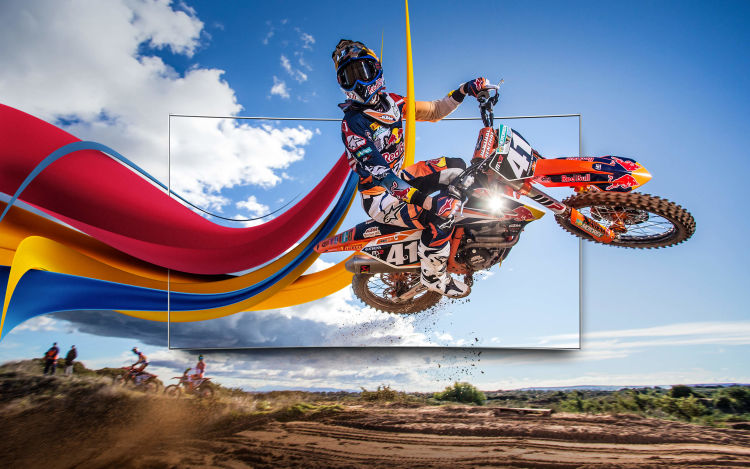Rethinking the future of in-car experiences from the ground up
With the rising ubiquity of technology over recent years, automotive has become a rapidly changing space. What once was an afterthought, in-car digital experiences are now the centerpiece of the modern driving experience. However, with their experience primarily in physical and interior design, the automotive industry has struggled to provide in-car technology experiences that users love like their smartphones. Aiming to change this paradigm, Faraday Future reached out to Edenspiekermann’s automotive team in Los Angeles.
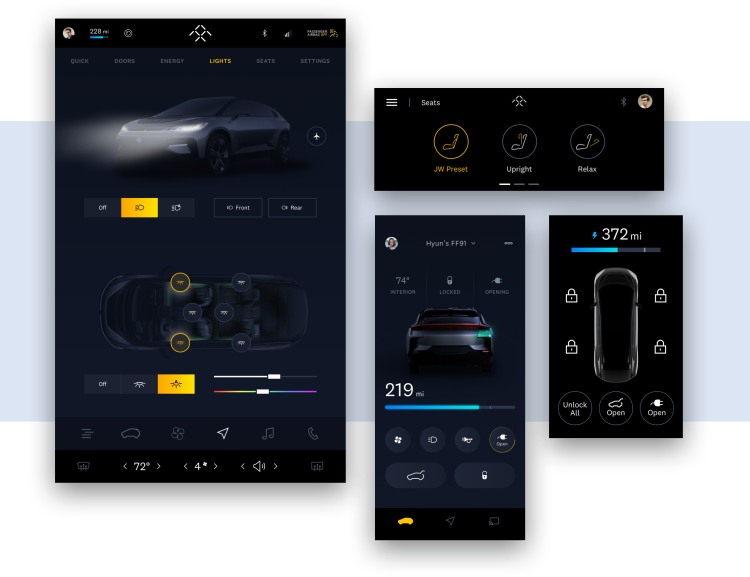
The next generation of automotive
Our brief: Create a functional and intelligent human interface concept that offers a best-in-class user experience across 12 different screens, sounds, and voices for their flagship model, the FF91.
Loaded with 12 touchscreens, facial recognition both in and outside the vehicle, voice control assistant, and fully digital vehicle controls, the FF91 represents the very cutting edge of what is possible when automotive and digital technologies are combined.
The FF91 represents the very cutting edge of what is possible when automotive and digital technologies are combined.
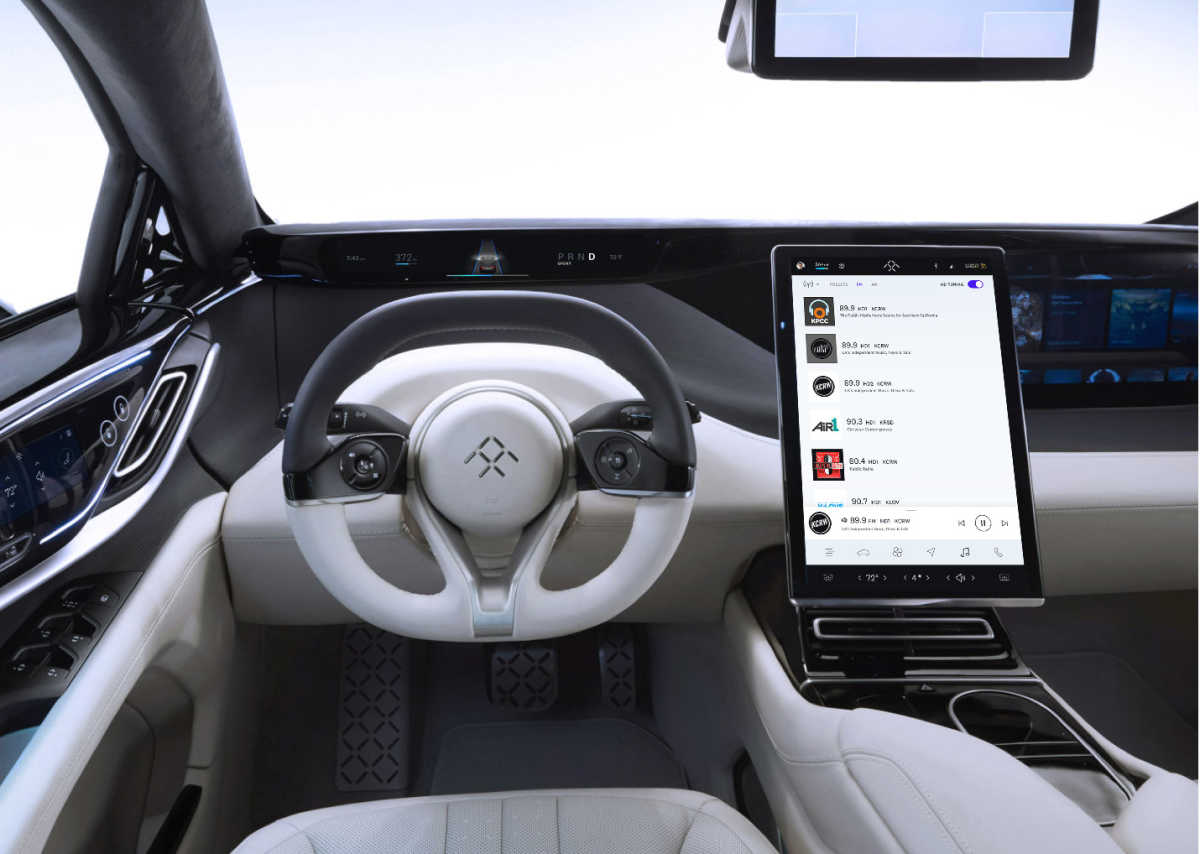
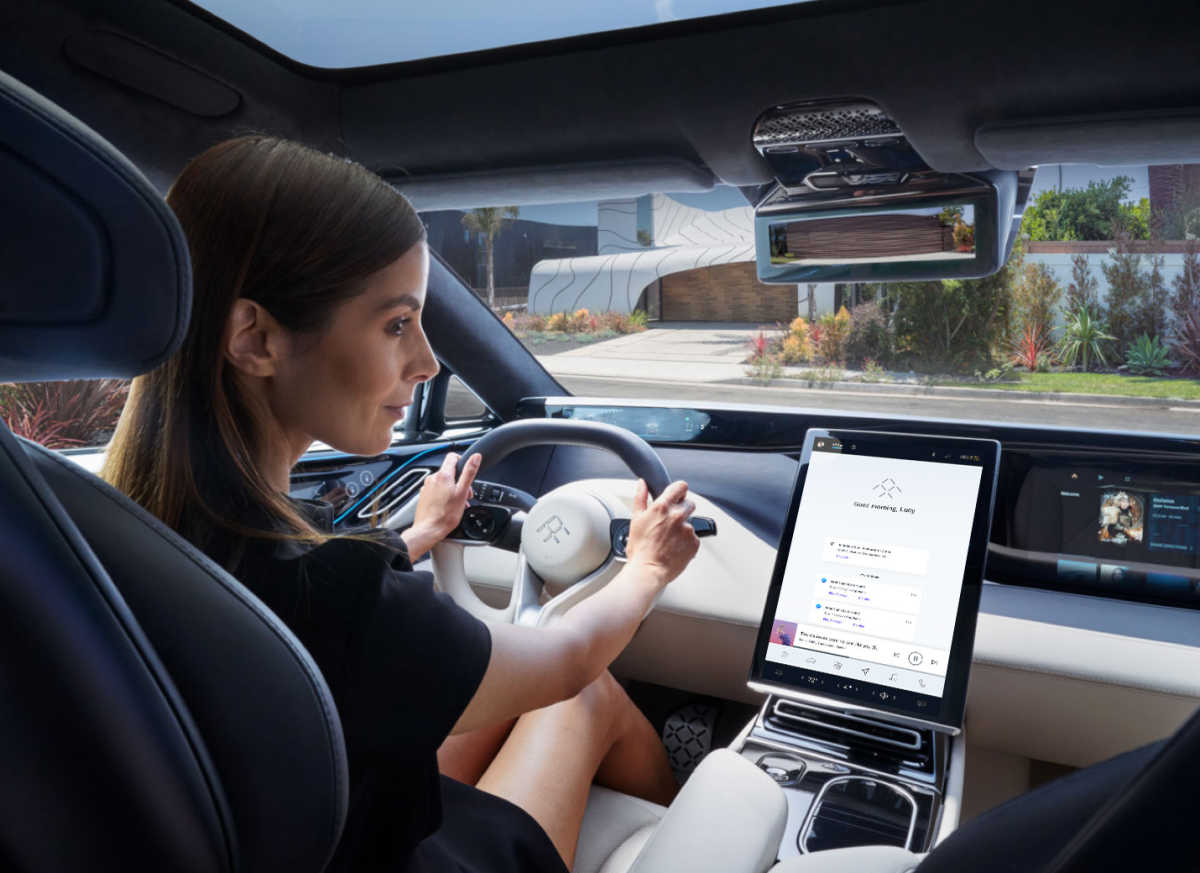
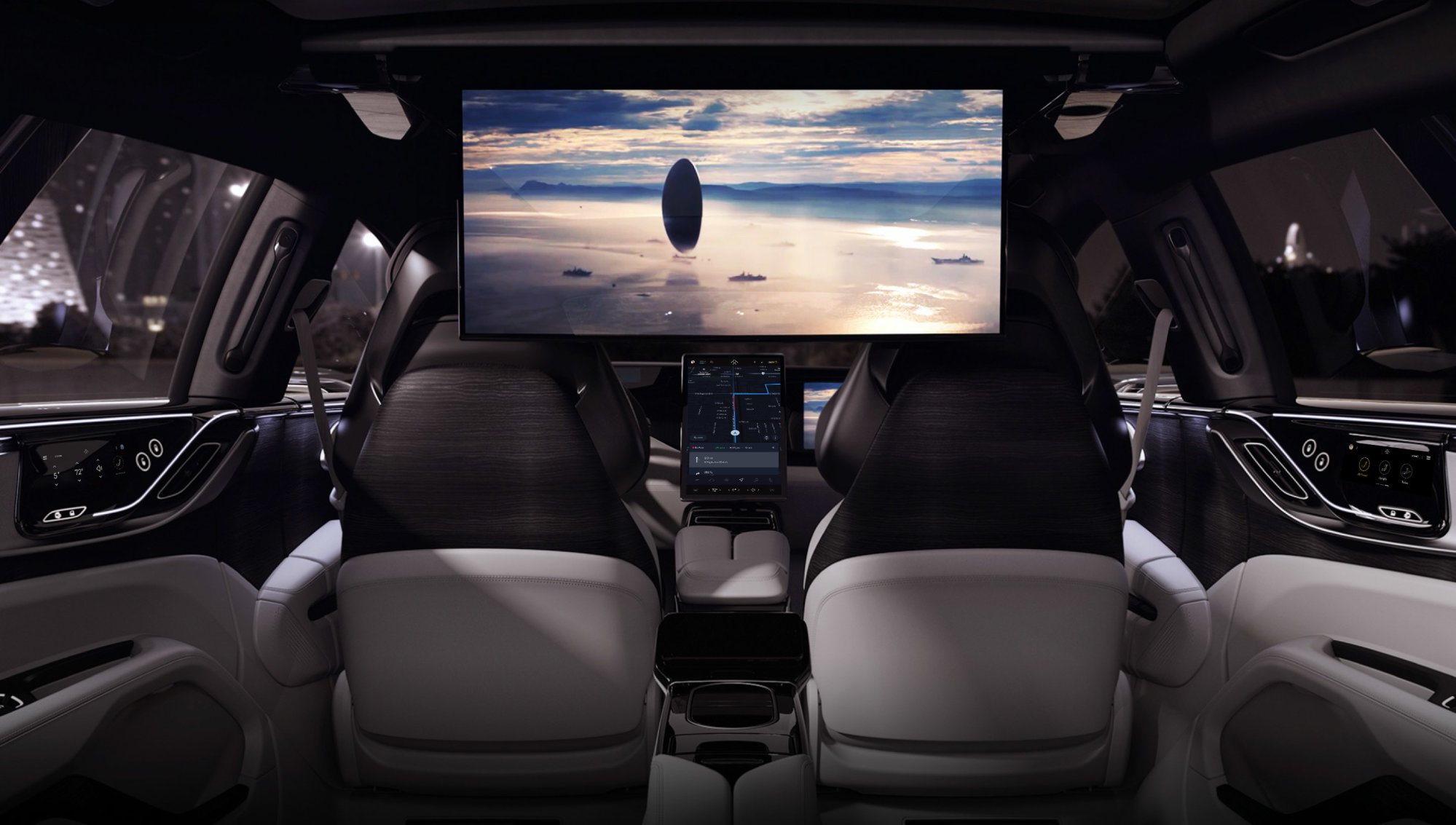
Creating a new type of automotive user experience
Designing an automotive experience is very different from other types of digital product. A car brand represents a lifestyle purchase, often an expensive one. This brand needs to be felt through every touchpoint, from the choice of leather to the interaction of a button on screen.
For Faraday Future, defining what this core brand personality would be was crucial before any design work could take place. This process starts with understanding the unique attributes that make driving the FF91 different from driving any other car. We uncover these insights through extensive market research, interviews, and positioning work sessions to define the core values that drive the interface. These four principles are the North Star through which all future design decisions are assessed.
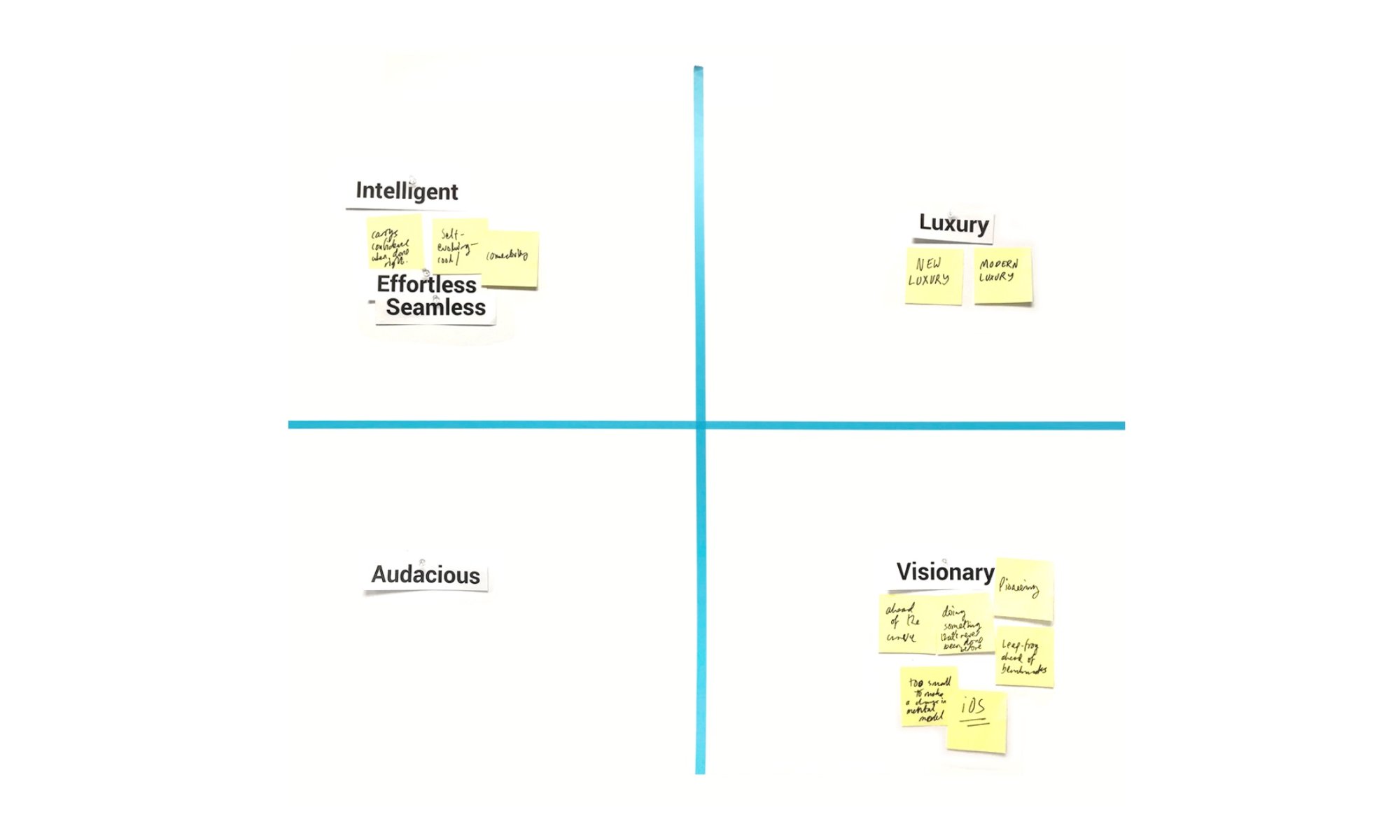
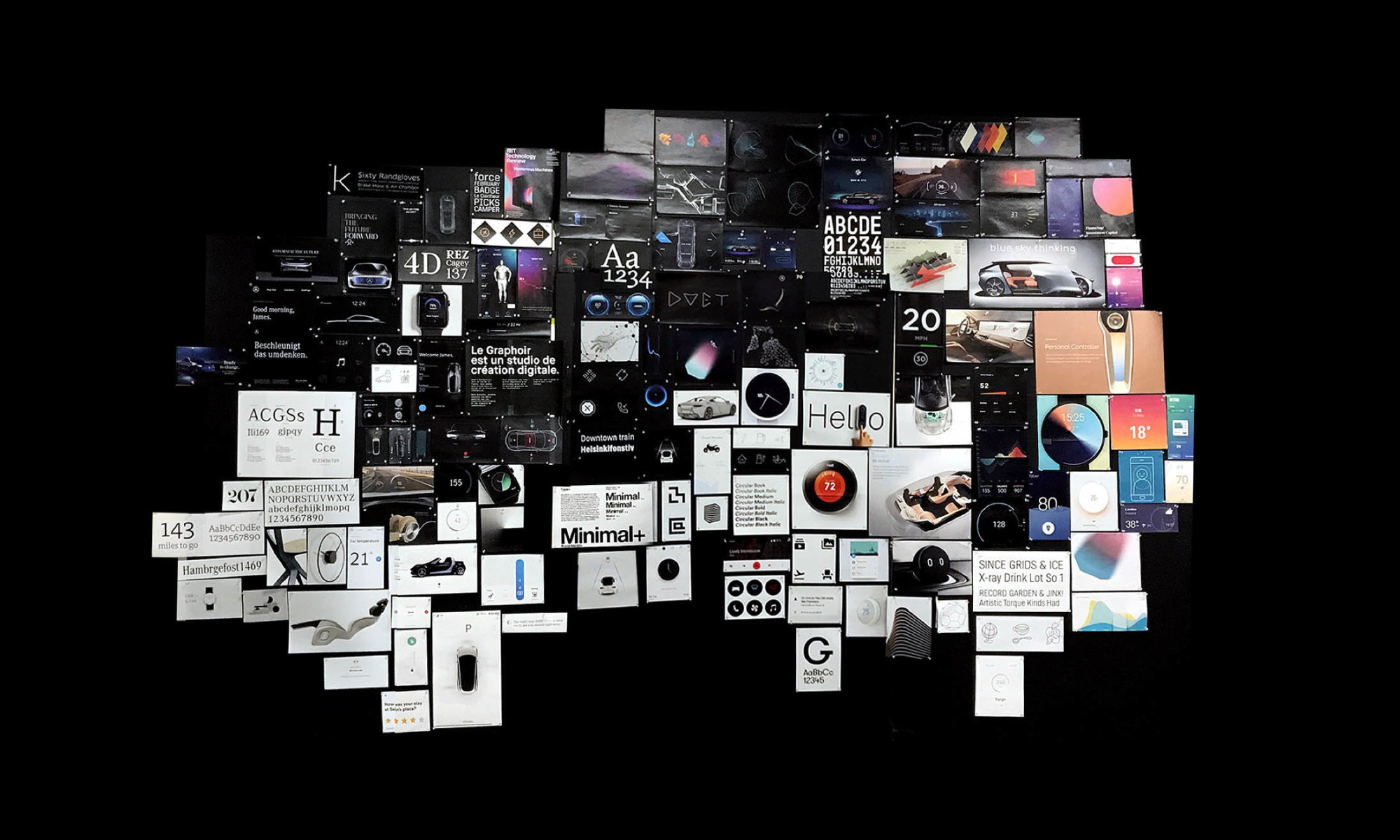
Defining the personality of the car
Early on in the workshop series, we realized one of the one important aspects of the FF91 experience was the advanced onboard artificial intelligence (AI). The car is capable of learning the preferences of the user—climate control, music preferences, etc. We believed that the design needed to reflect this intelligence manifested through voice and visual as a virtual assistant (think Jarvis from Iron Man) that was always on standby to help the user.
With the AI playing such a central role in the car, establishing its personality was key. Our team conducted several workshops to define the personality of the assistant. Our team deconstructed existing AIs—real ones like Alexa and Cortana, but also fictional ones such as Jarvis from Iron Man, Samantha from Her, and of course, HAL 9000. By using examples of these AIs, as well as other known celebrities, we were able to define both the desired archetype and the personality traits for the FF91’s assistant.
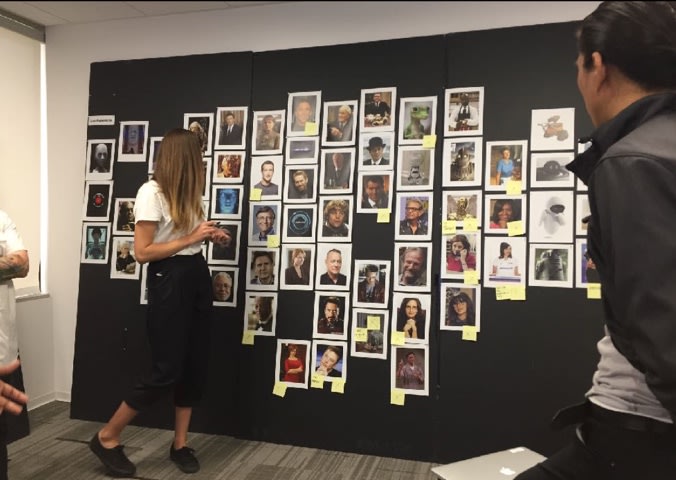
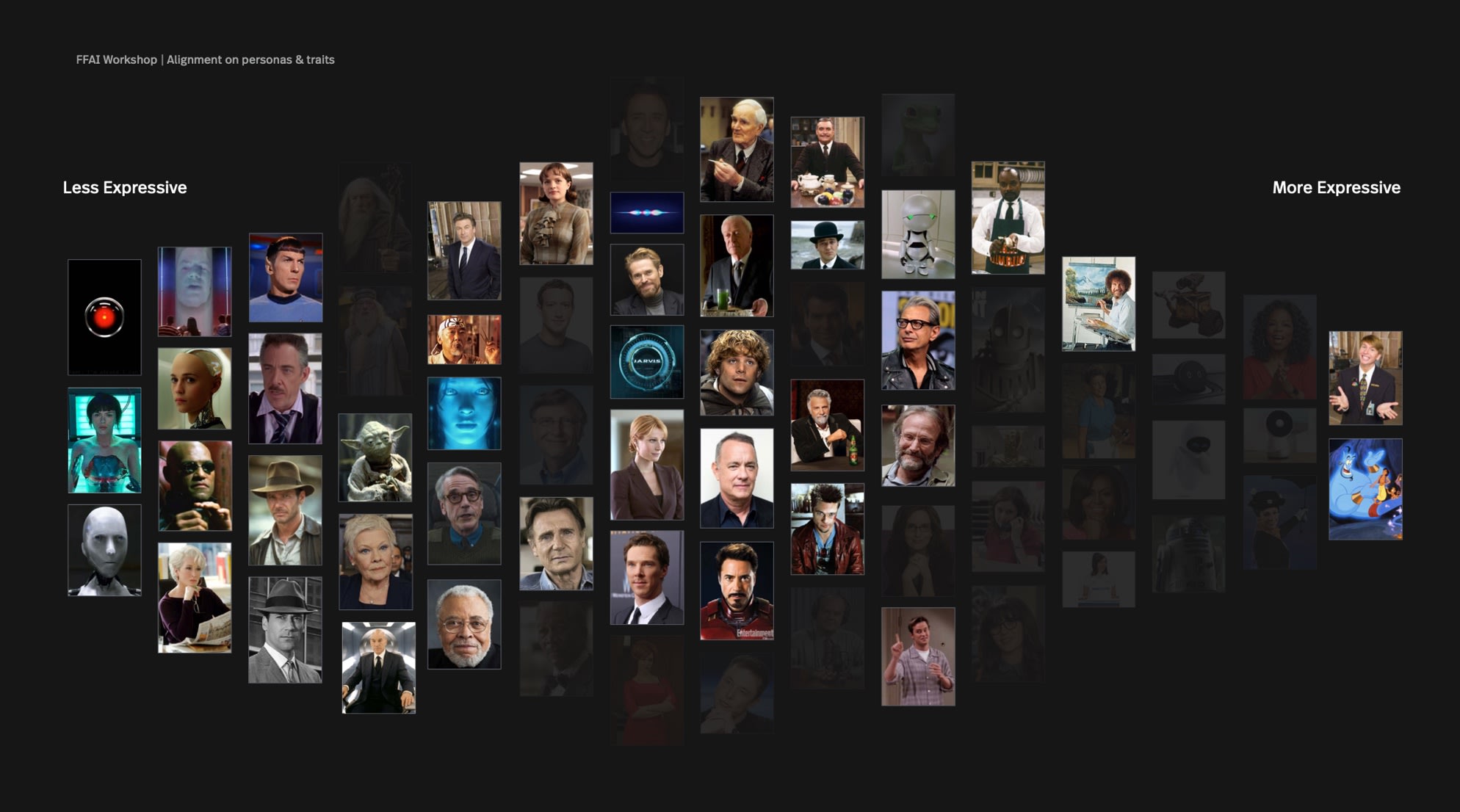
A seamless experience
The new FF91 design language centers around an experience that feels years ahead of its time—both in terms of look and feel, and the technology itself. The digital experiences are fully balanced with the physical interior, the time of day and the desired emotional state the driver wants to be in. This fine-tuned experience creates the ambience that turns this car into a second living room.
Vibrant colors—inspired by some of the greatest in Hollywood’s cinematography—inspired the palette, with complementary tones used for night and day modes. The overall interface glows with a shifting backlight, representing the AI assistant in the background, that is always ready to spring to like and assist with the simple voice-command.
Visualizing Intelligence
The artificial intelligence of the FF91 comes to life.
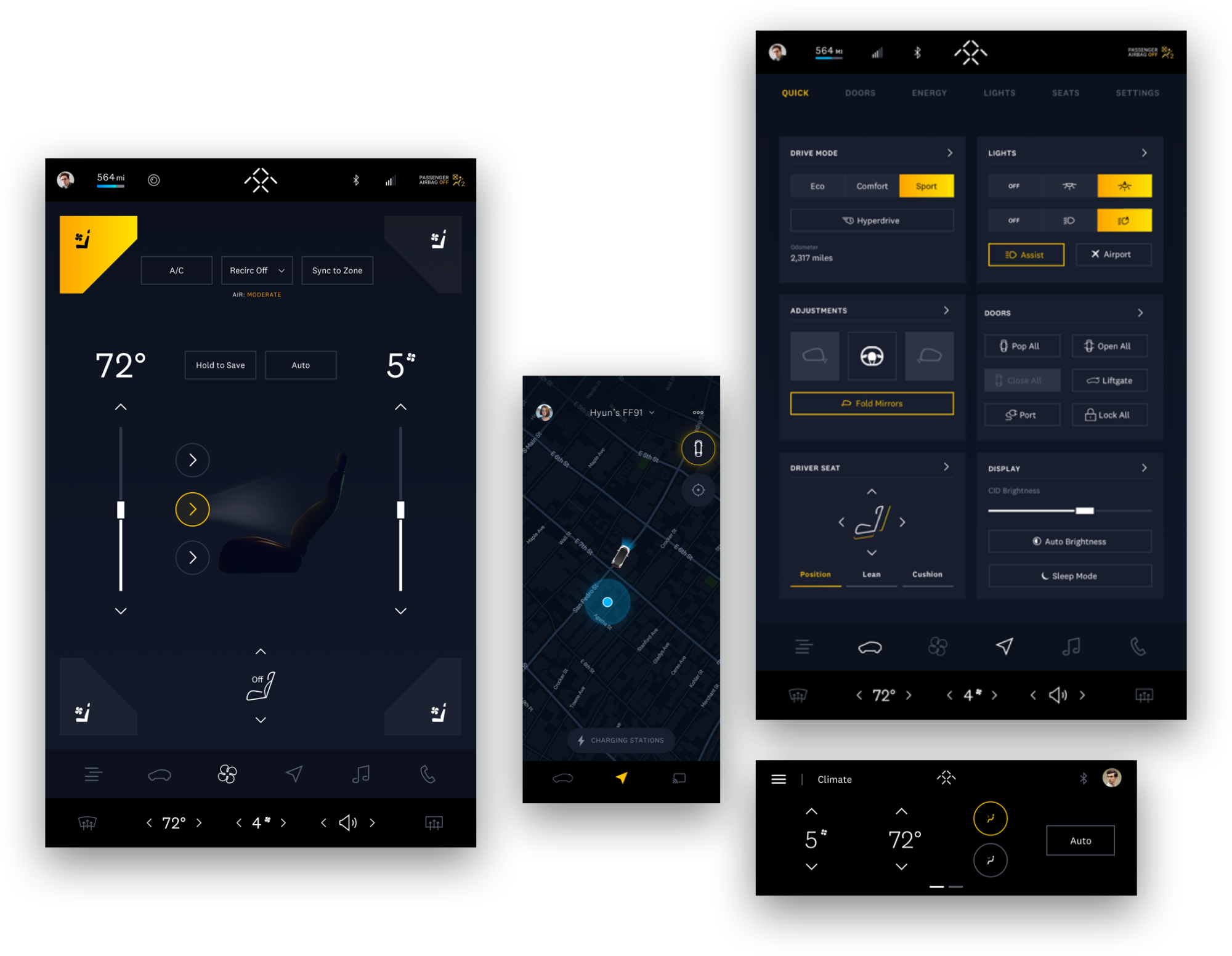
Designing a foundation for scale
Designing and prototyping an interface is one thing. Coordinating 40 designers and engineers, product teams located across the globe, is another thing entirely. In order to manage this complexity, we needed a system that allowed multiple teams across multiple continents and disciplines to work toward the common goal. We set out to create a UI Toolkit that served as a single source of truth, setting the roadmap for scale and future evolution.
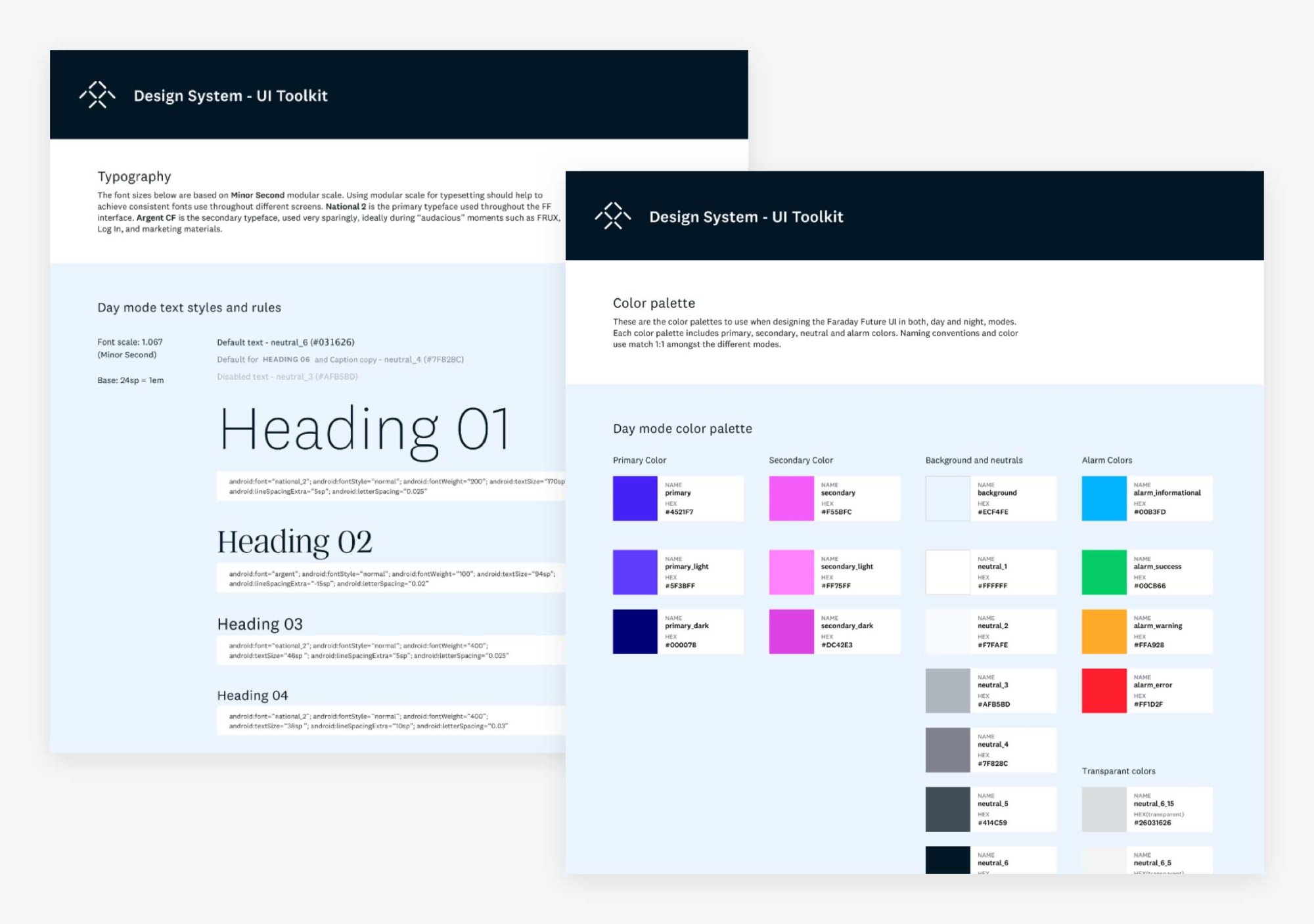
An integrated team
As with most automotive companies, Faraday Future had an incredibly talented in-house team that we worked alongside. To ensure maximum efficiency and to produce the highest quality work, we placed our team of designers on-site at the Faraday Future headquarters in Los Angeles for almost ten months. Our designers integrated fully with their existing team, providing guidance on process, introducing rituals and methodologies to help them continue developing the platform long after our engagement ends.
